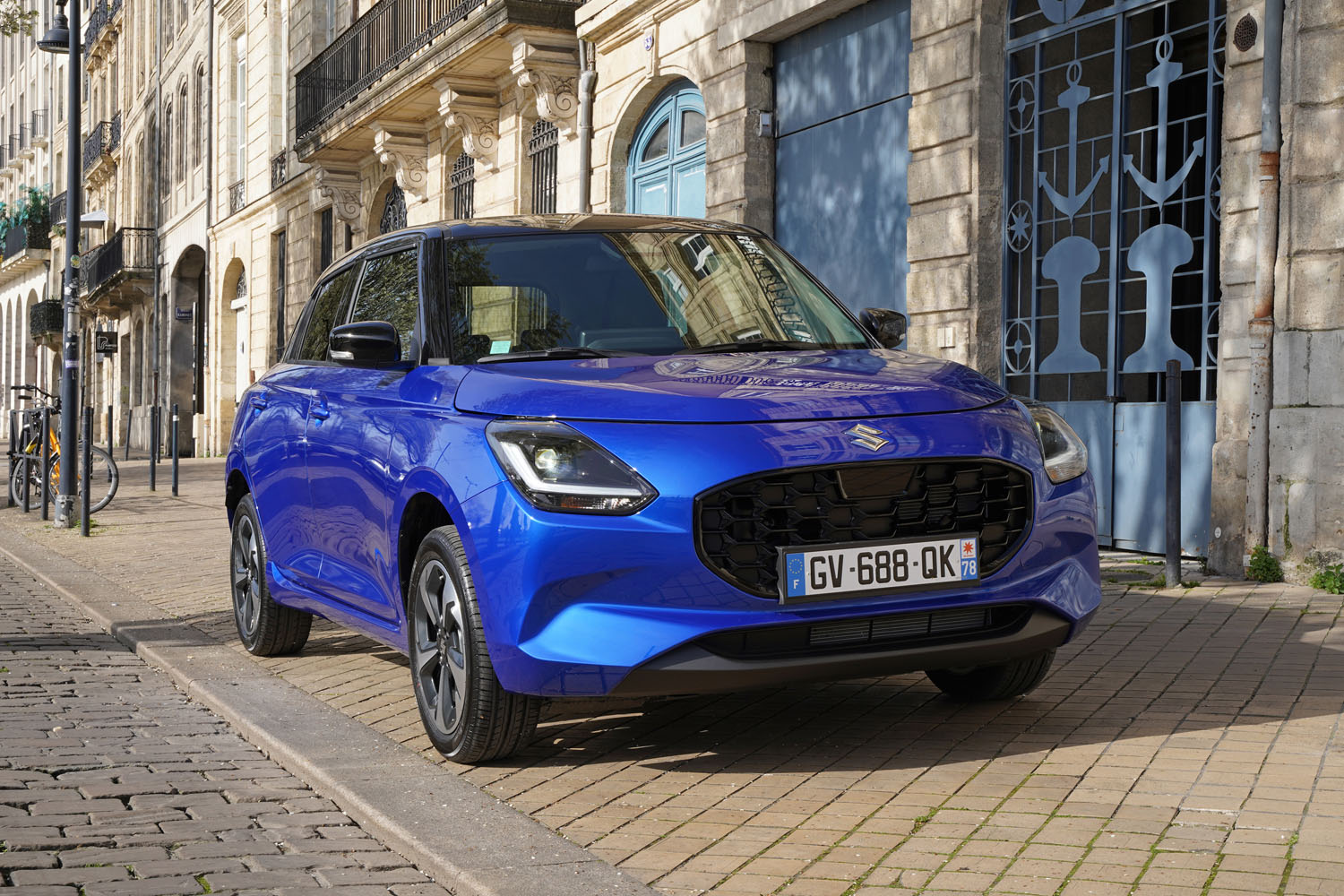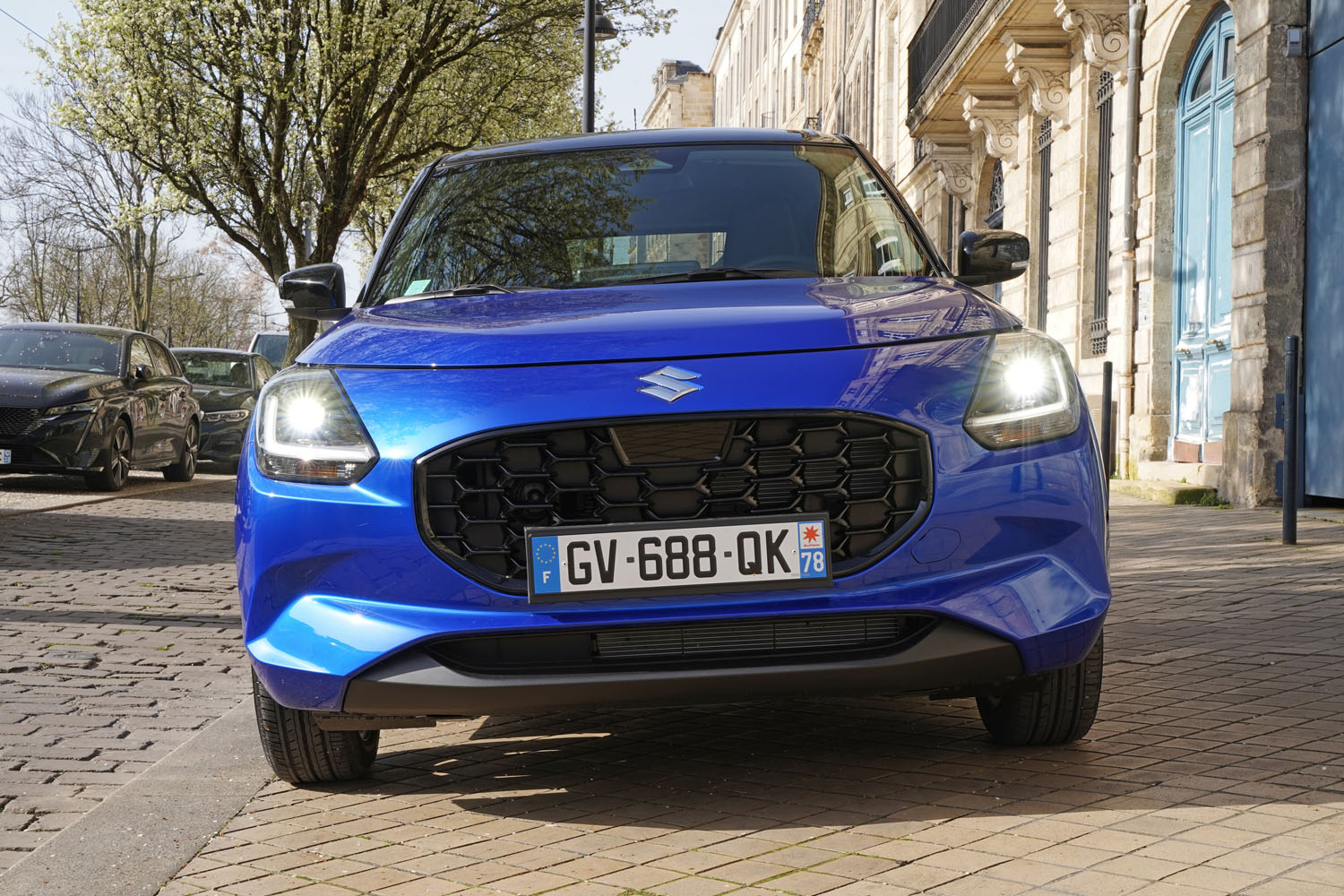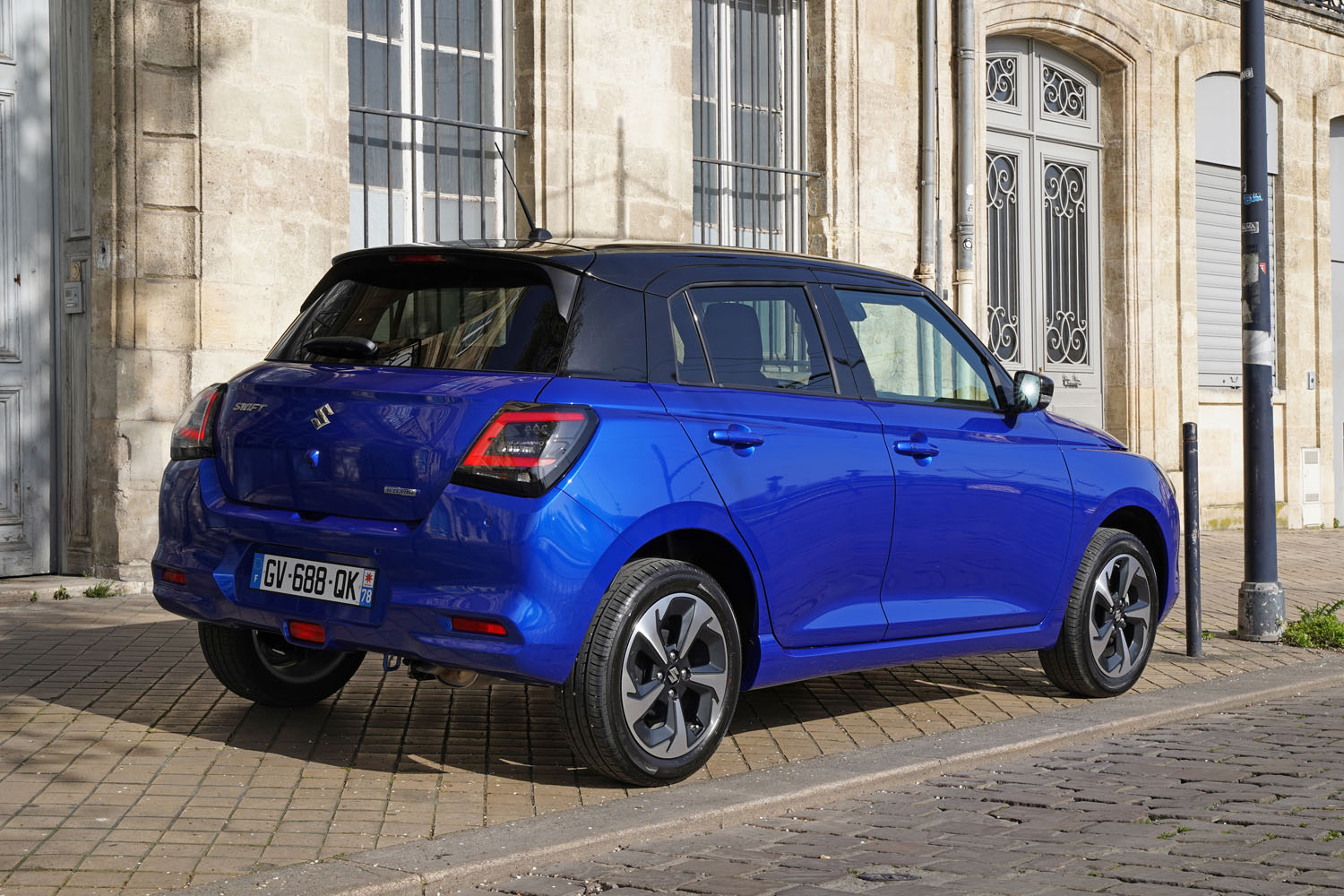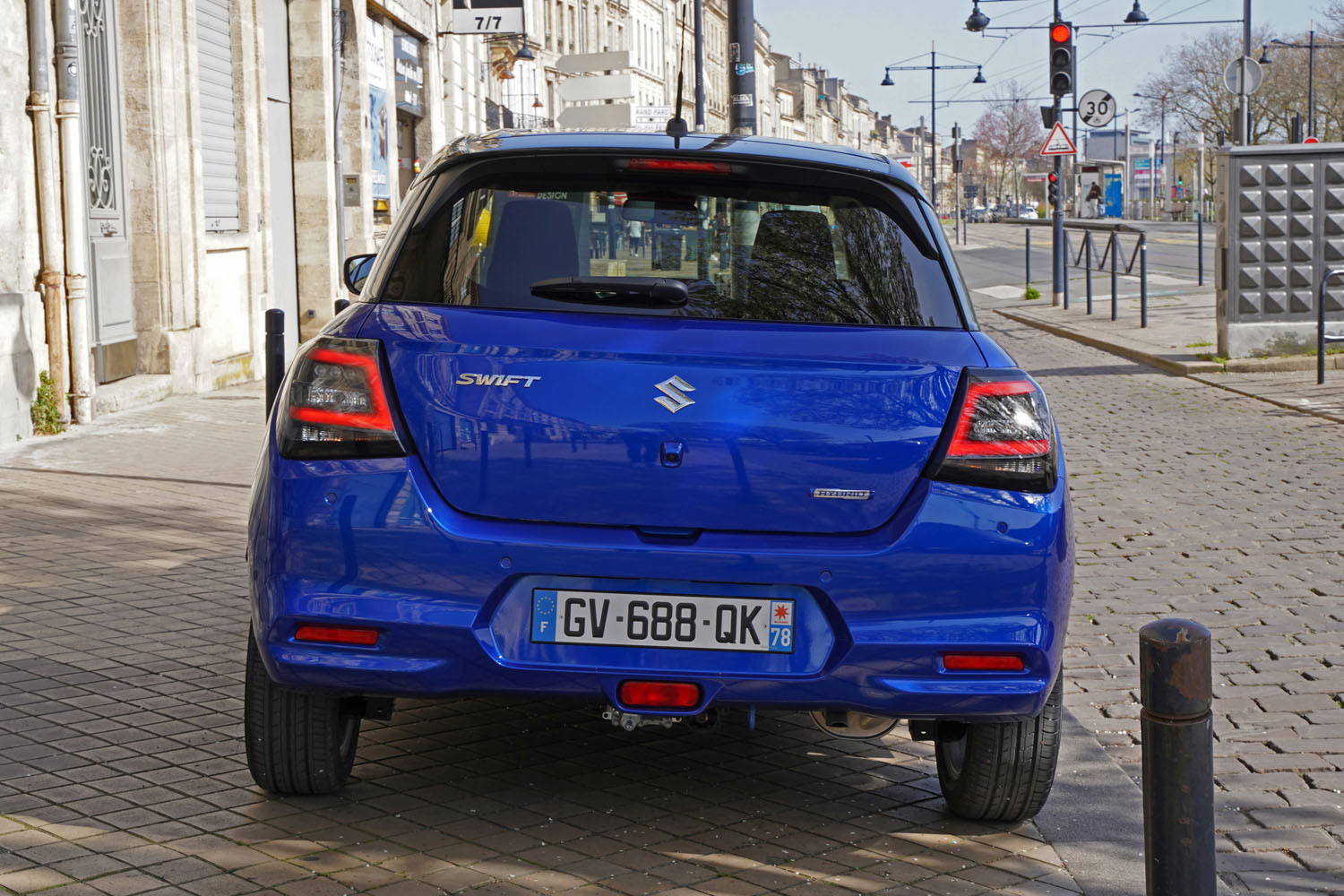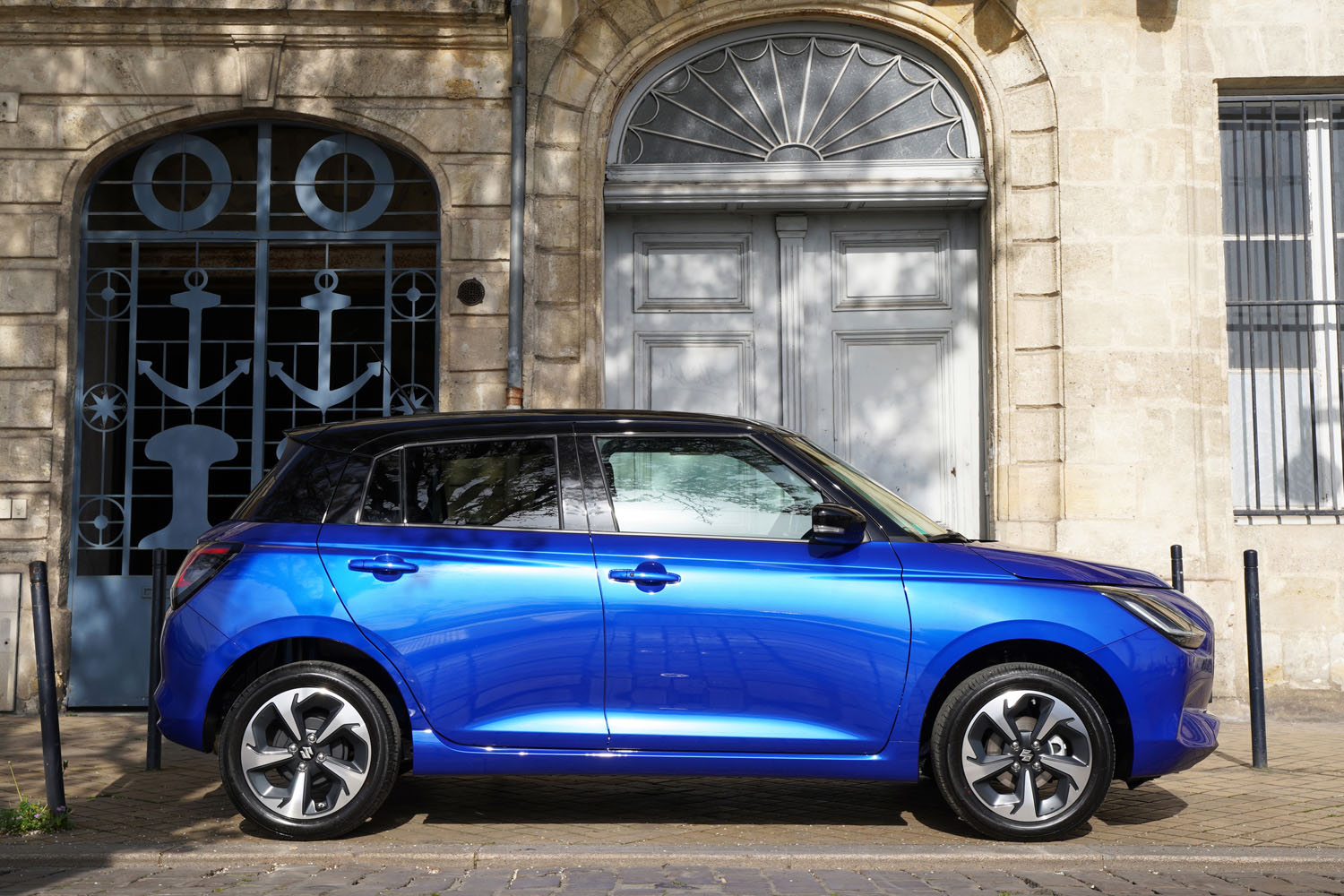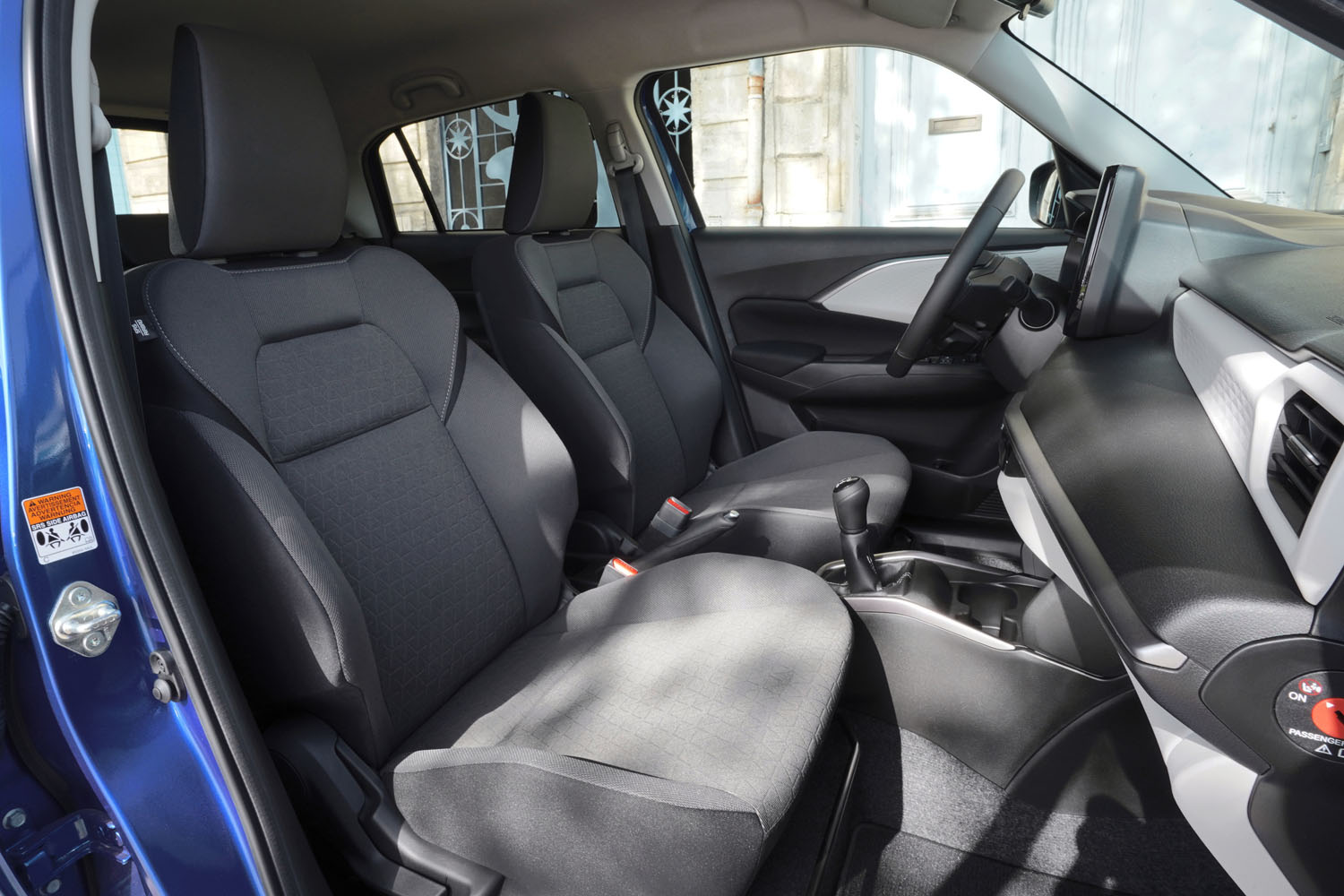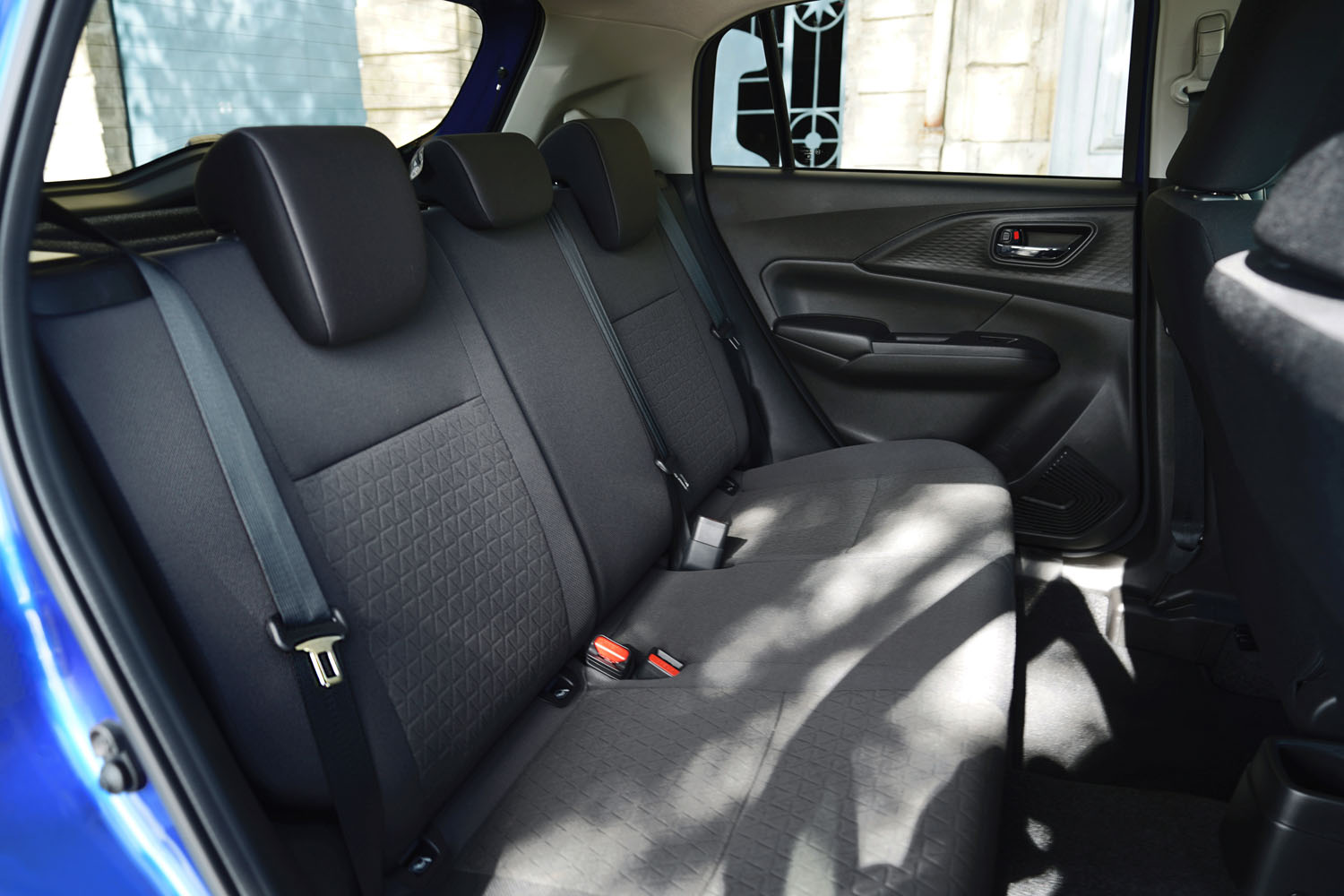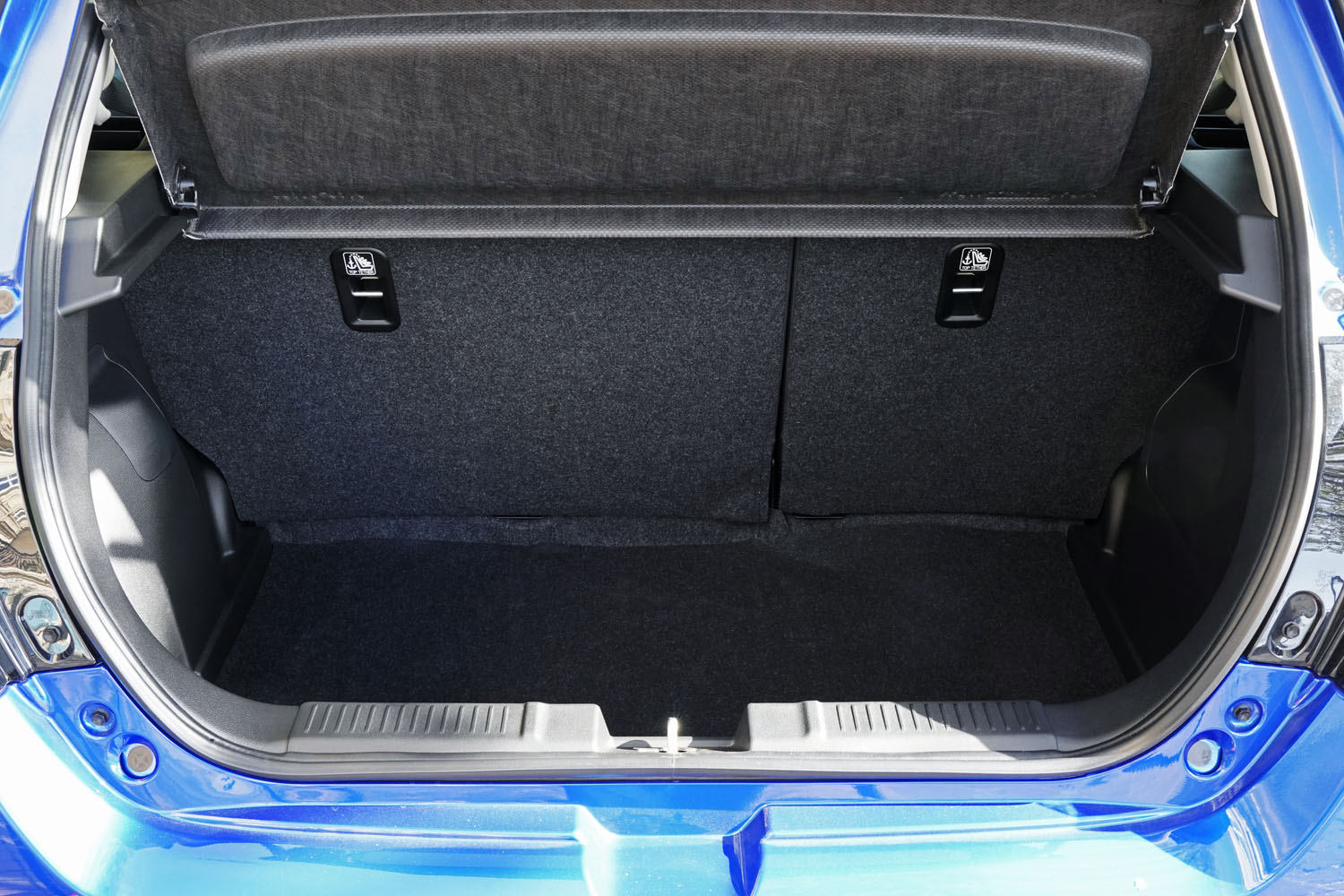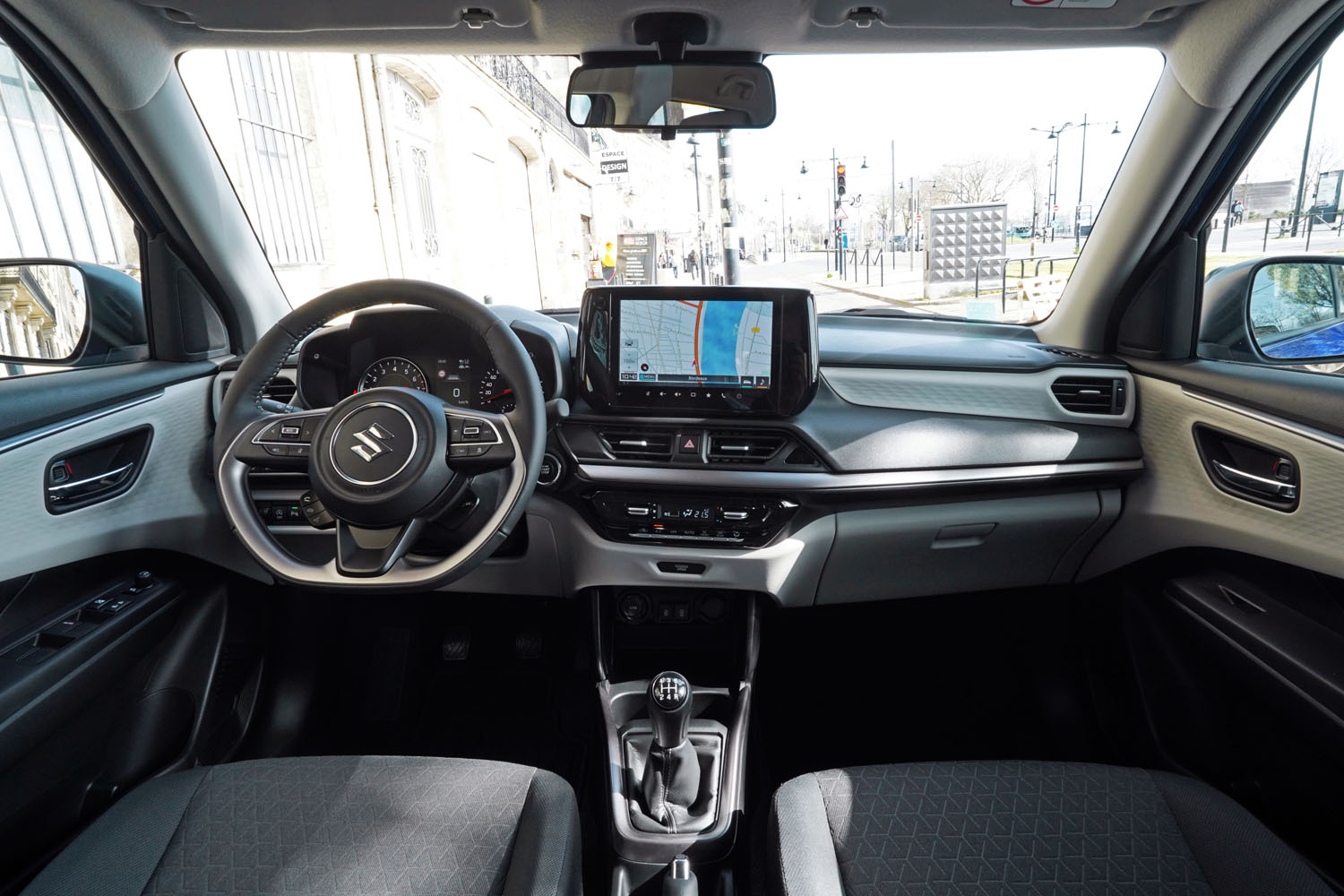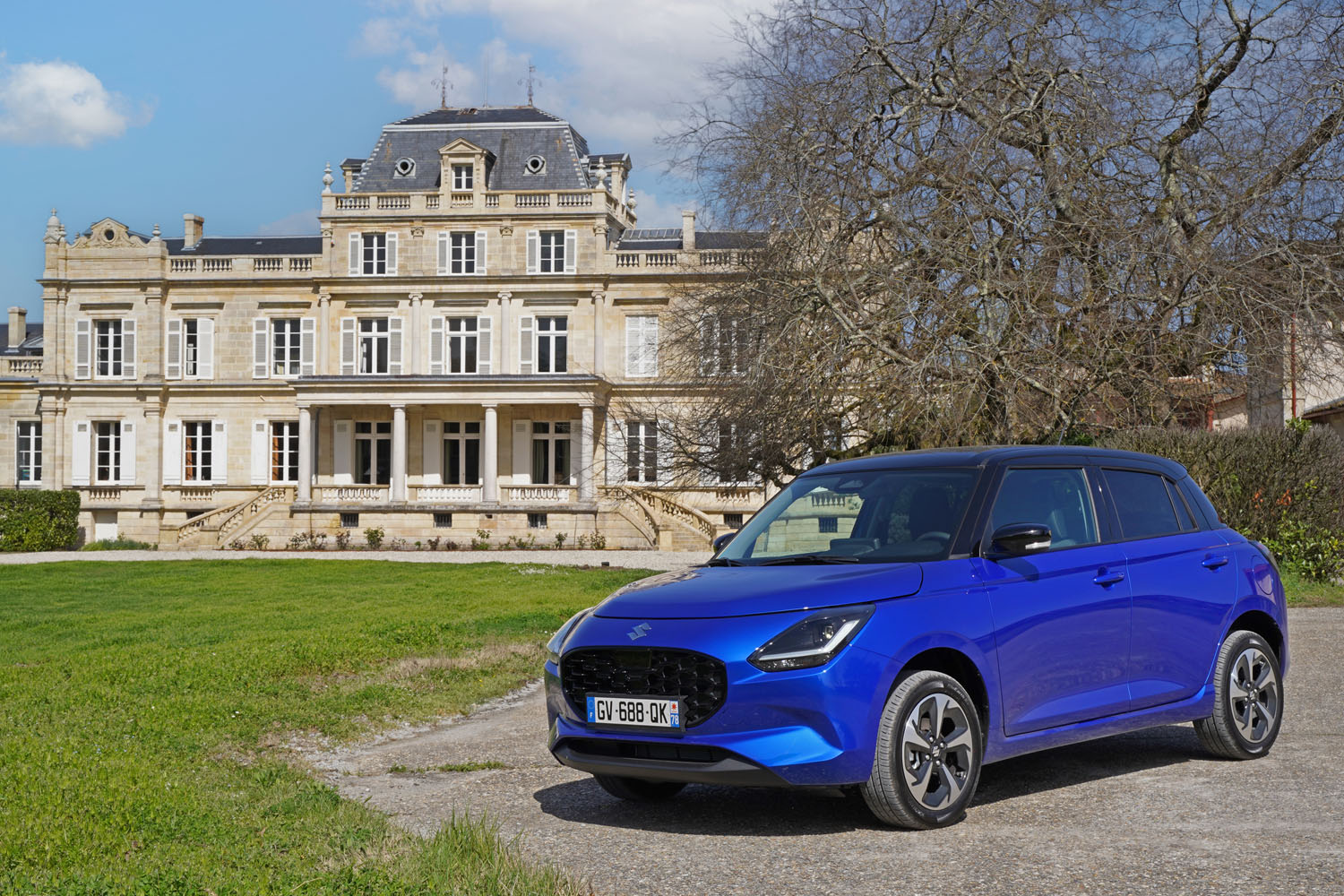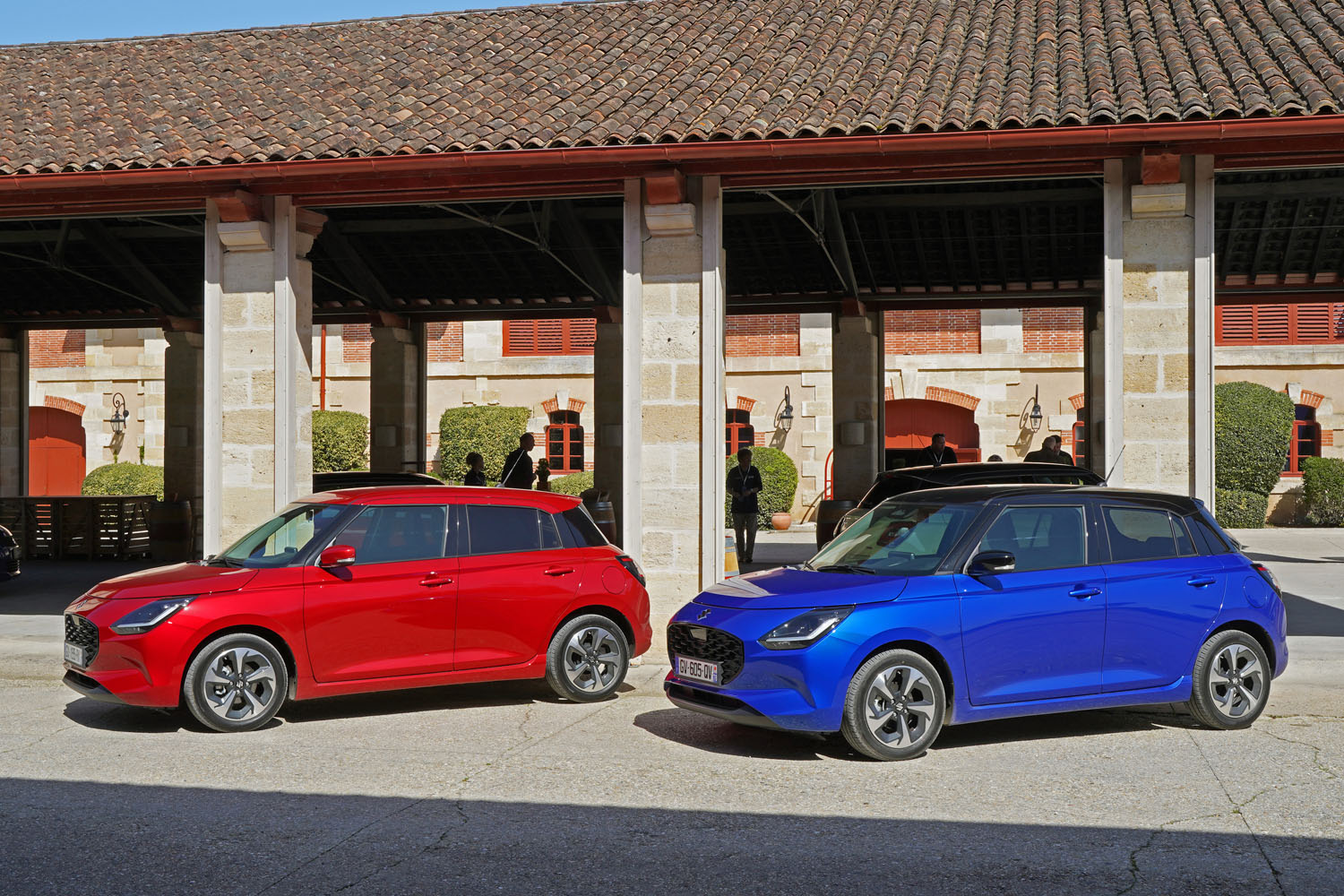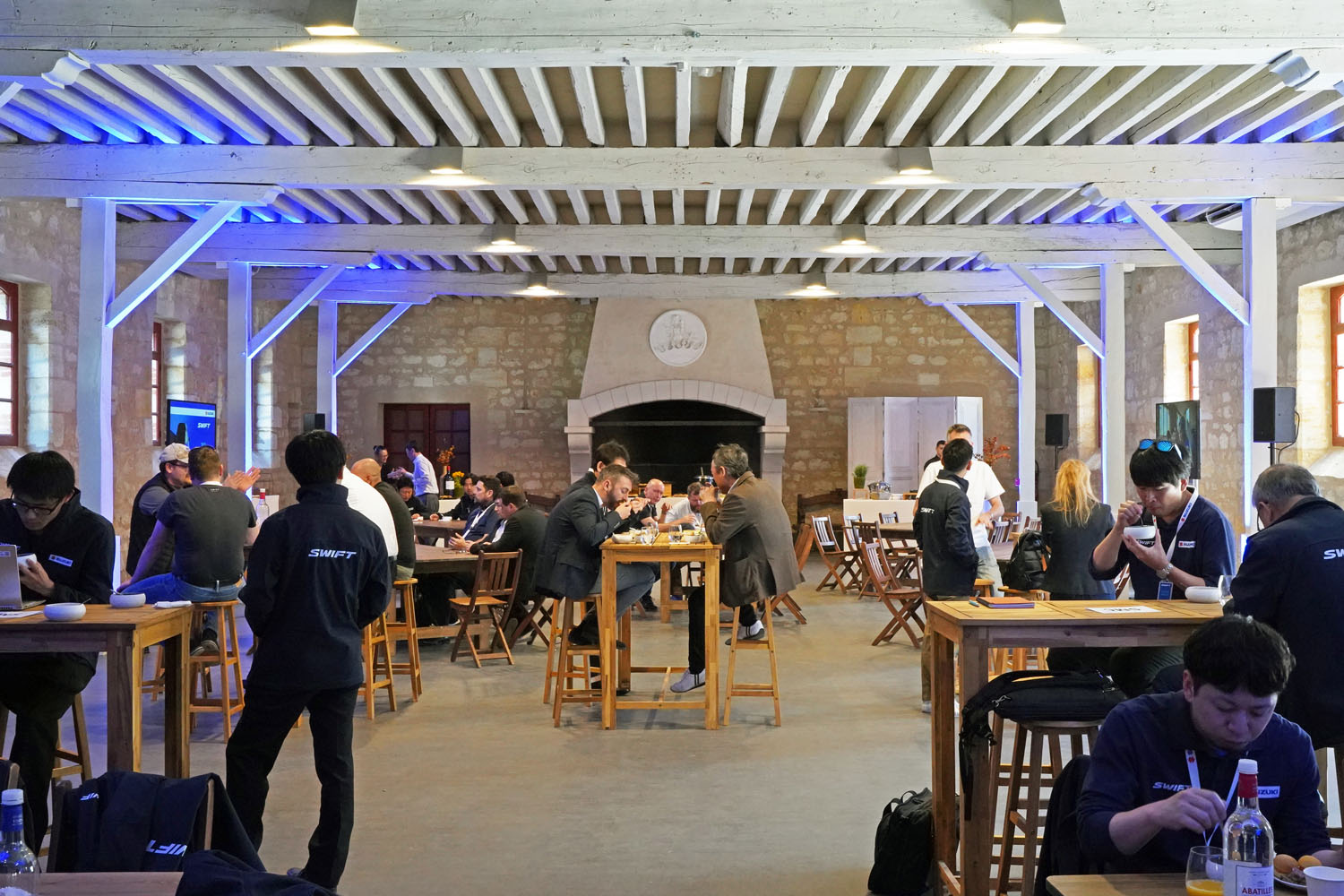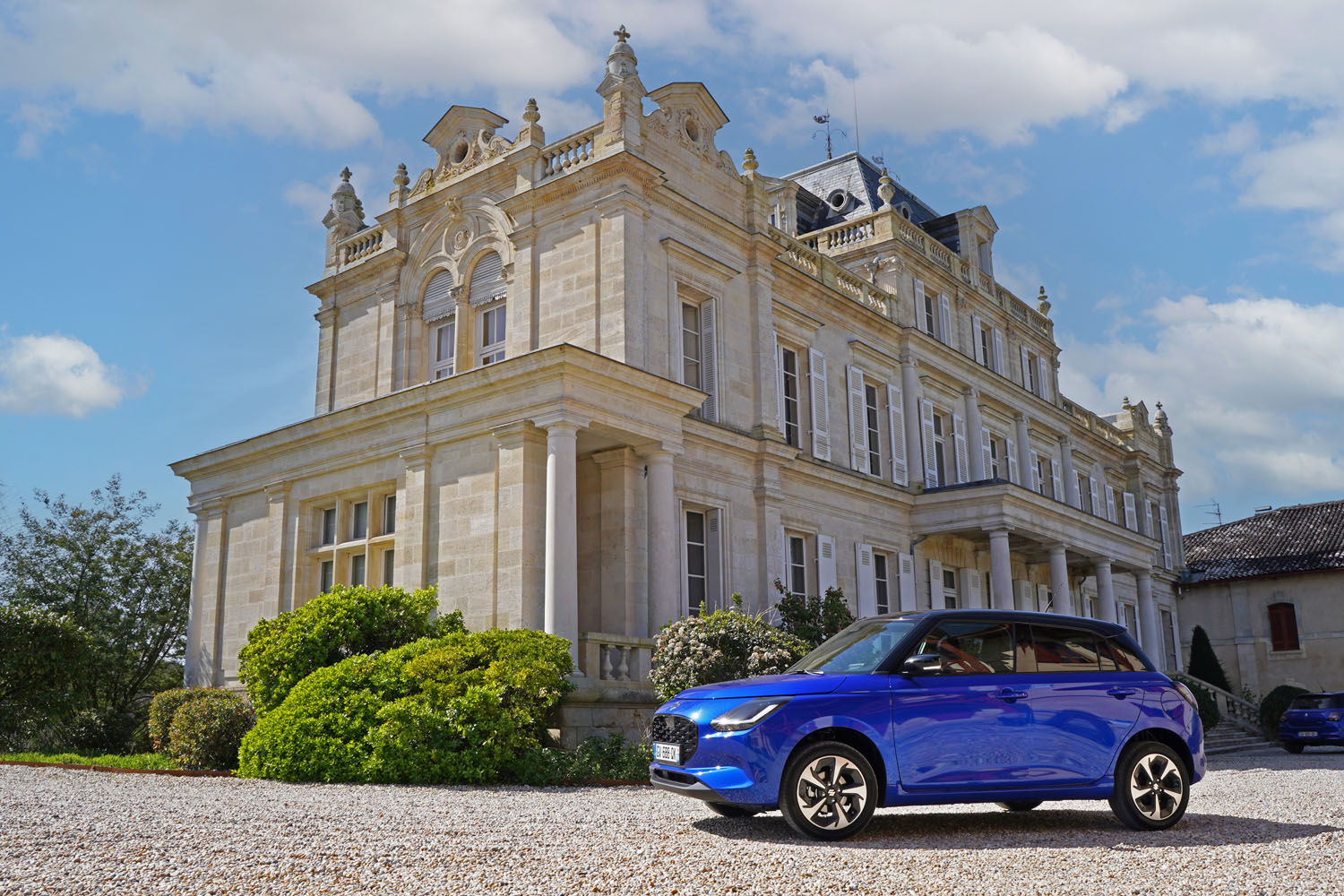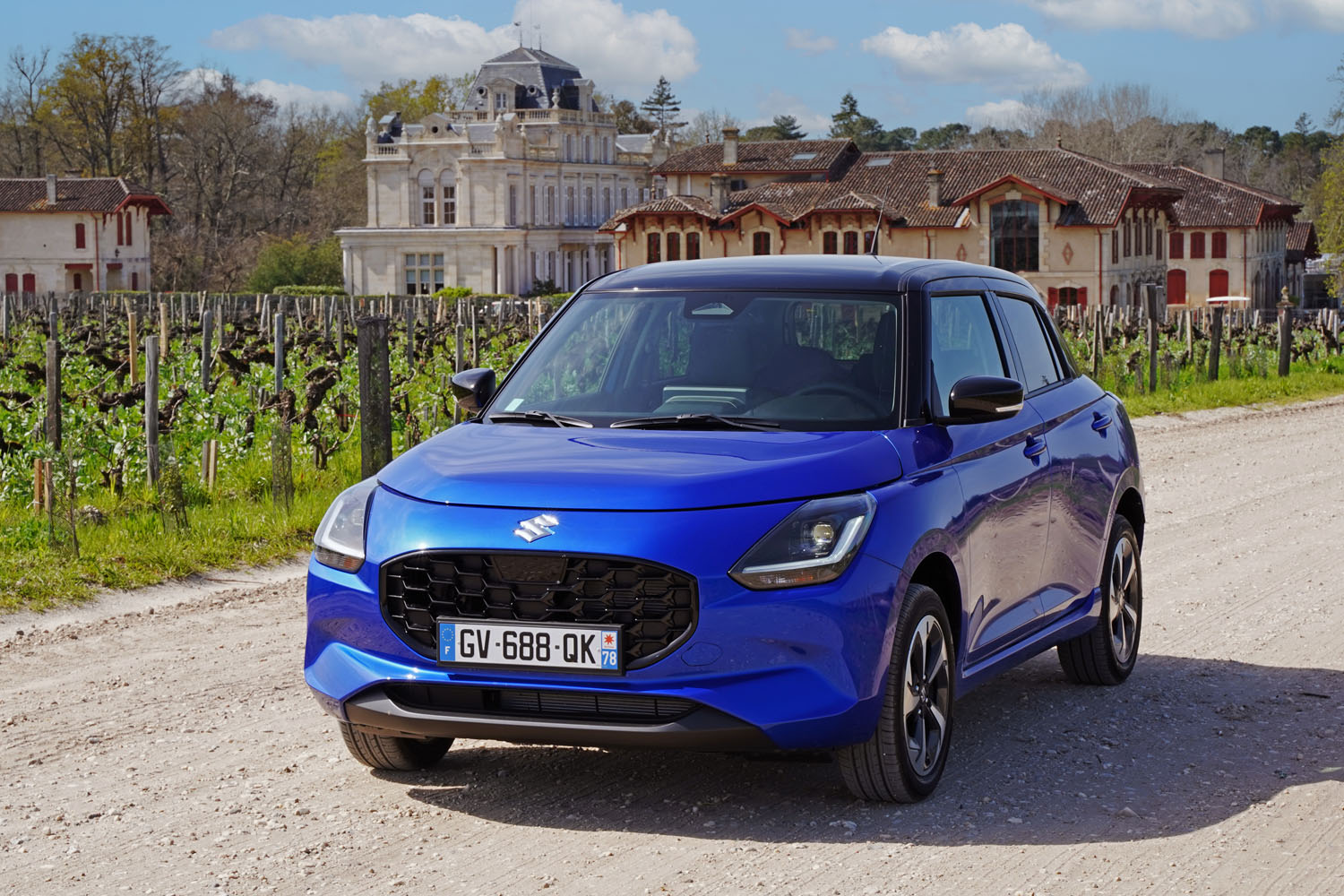Bordeaux | France – Recently, Suzuki Motor Corporation invited numerous European journalists to the unveiling of the new Swift in the famous wine-growing region of Bordeaux, France. Along with a few colleagues, I had the opportunity to drive the new edition of the iconic model for the first time – and pay a visit to the Château Giscours winery…
The previous six generations of the Suzuki Swift have already sold over nine million units worldwide since 1984. In Austria, the small car was Suzuki’s best-selling model with a share of 23 percent in 2023. With the new, seventh generation of the Swift, Suzuki Austria expects to further solidify its spot at number one. After learning all the important details about the new model at the international press conference, it was onto the first test drive to answer the question of whether the new model still has what it takes.
The Suzuki Swift I tested came across quite briskly with its two-tone paintjob in the new Frontier Blue Pearl Metallic colour. The candy-like look utilizes a special three-layer paint finish. Transparent paint is applied over a silver primer, followed by the clear coat. In addition to blue, this colour is also available in red (see photo below). The exterior of the driver’s cab is a subtle black, giving the Swift an additional stylish touch.
MODERN DESIGN THROUGH AND THROUGH
With the more angular exterior design, Suzuki has become more expressive visually without neglecting its original roots. At the front, the high-quality radiator grille with its piano lacquer stands out, framed by modern LED headlights with L-shaped daytime running lights. The striking shoulder line and the muscular contours immediately catch the eye. The three-dimensional clear glass taillights round off the modernist design.
ATTRACTIVE AND THOUGHT-OUT INTERIOR
As soon as I got in, the high-quality seats and the two-tone dashboard in black and light gray caught my eye. Additional light grey trim elements with a three-dimensional structure subtly change their appearance depending on the incidence of light, thus underlining the consistently high-quality look. The somewhat old-fashioned round instruments and the outdated central display of the predecessor have given way to modern displays. What remains are the round instruments, which are now presented in a much more stylish form. The high-resolution touchscreen has been moved to the top of the dashboard and, now at nine inches, is a better size than it was in the previous model. In addition to Suzuki’s own multimedia and navigation system, your smartphone can connect wirelessly via Apple CarPlay or Android Auto. For those with a knack for technology, there is also the Suzuki Connect app.
I was able to operate the air conditioning very conveniently with two switches below the centre air vents – which, for me, was much more pleasant than having to fumble around endlessly on the display. The overall layout of the controls is very well thought out. Everything is easily accessible where you would intuitively expect it to be.
The space in the front and rear is generous for a small car. The trunk capacity of 265 litres is standard for the class and can be increased to 589 litres by folding down the divisible backrest. As with its predecessor, the high loading still is a nuisance.
ECONOMICAL DRIVING WITH MILD HYBRID SUPPORT
I was pleasantly surprised by the drive. At 61 kW/82 hp, the Swift, whose engine is not exactly generous on paper, was quite fun to drive in the city and on country roads. The 1.2-liter, three-cylinder petrol engine is eager to accelerate and produces a pleasant sound. The 12-volt mild hybrid system with integrated starter generator (ISG) improves acceleration and contributes to fuel efficiency. The factory-quoted fuel consumption of less than five litres per 100 kilometres proved to be very possible in the test. In addition to front-wheel drive, all-wheel drive is also available, which automatically engages the rear wheels in the event of loss of traction on the front axle. A continuously variable CVT automatic transmission is offered as an alternative to the five-speed manual gearbox.
ON THE WAY TO THE CHATEAU
The test round took us to the Margaux wine-growing region to the north-west of Bordeaux. Château Giscours, one of the most famous wine estates in the region, is located in the middle of this extremely picturesque landscape, surrounded by upscale, high-quality vineyards. Since we needed more than one day for this excursion, we were able to taste the world-famous red wine in this region the evening before at our hotel – in the form of an excellent glass of “Château Giscours”, a cuvée of Cabernet Sauvignon and Merlot. It was a day of indulgence, with other local delicacies awaiting us at the winery.
The journey to the castle took us out of the city of Bordeaux. As the area became more rural, the road conditions became progressively worse. There, the firm, previously unremarkable chassis showed its hard and even somewhat uncomfortable side. The direct steering always gave me a natural driving feel, and the turning circle of just 9.6 meters is not only useful in the city.
Suzuki has made further improvements to the assistance systems, which now respond even more sensitively. When adaptive cruise control was activated, the lane departure warning system kept the vehicle in its lane extremely well, provided there were road markings. This worked surprisingly well even on tight bends. As a further safety feature, the active brake support always intervenes when danger in the form of a collision is imminent. A combination of radar and camera system detects the current traffic situation and warns of any obstacles. If necessary, the braking force is increased, which can lead to emergency braking.
So, to answer my initial question: yes, the new Suzuki Swift has what it takes to become a bestseller again. The attractive combination of a fair price (from €17,490 in Austria, £18,699 in the UK), advanced technology, low fuel consumption and attractive design will once again appeal to lots of buyers.
Text and photos: Armin Hoyer
Translation from German to English: Ethan Shenhar


